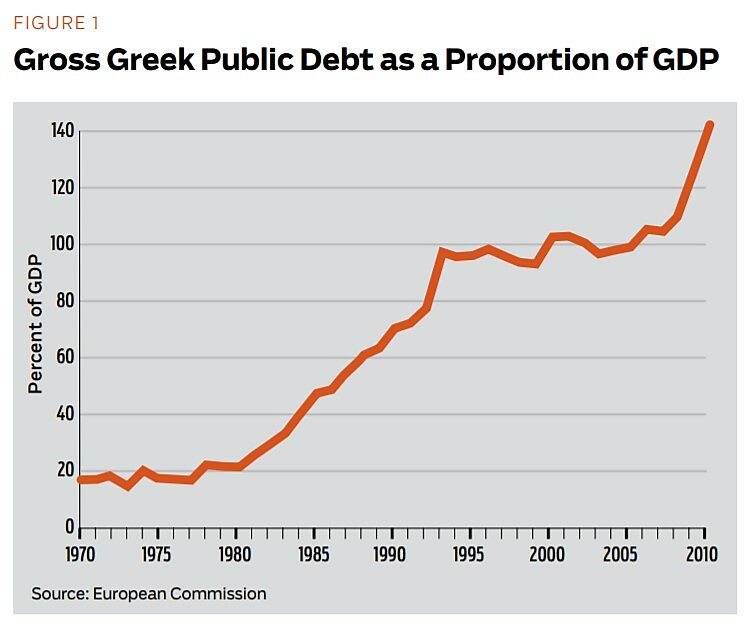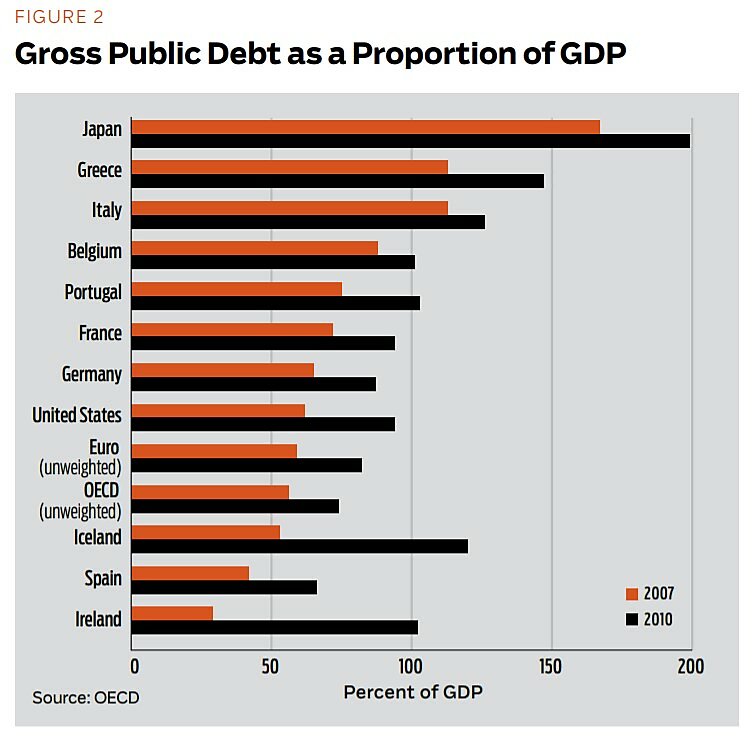The reason for the default is simple: over the past decades, the Greek state had built up an unsustainable public debt that other European taxpayers did not want to shoulder. The crucial fact is that the Greek debt problem is essentially structural and not a consequence of the recent recession, which merely precipitated the catastrophe. Data from the European Commission show that the ratio of Greek public debt to gross domestic product, which reached 143 percent in 2010, was already 105 percent in 2007. In the 1970s, the ratio was around 20 percent of GDP but, from 1980 to 1994, it exploded to 96 percent (see Figure 1). Most of the damage was done long before the Great Recession struck.
Part of Greece’s problem is the stagnation of tax revenues. In 1995 (the first year that Organization for Economic Cooperation and Development data are available), government expenditures stood at 46 percent of Greek GDP, 7 points below the euro-area figure of 53 percent. However, government revenues in Greece were 37 percent of GDP, whereas the euro area’s was 46 percent—a gap of 9 points. Greek taxpayers did not want to pay for high government expenditures and the state was not able, or not willing, to enforce higher taxes.
Beyond Greece | The already wide discrepancy between expenditures and revenues in the euro area (7.5 percent in 1995) points out that something has long been rotten in Europe at large. There too, the taxpayers were not paying for all the goodies they received from the state. In other words, Greece is not alone in having a structural deficit and public debt problem. With few exceptions (Ireland, Spain, and the Northern countries), European countries were, before the Great Recession, riding a trend of high public deficit and indebtedness that had started in the 1970s.


